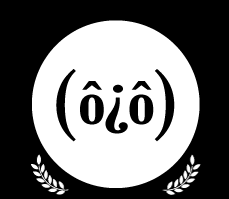22.4.08
21.4.08
The Next Creative Revolution
By: Nick Law Published: Mar 24, 2008pedr
Fifty years ago, to join advertising's creative guild, a man had to tell funny stories and smoke a pipe. The patron saint of this exclusive guild was a guy in a suit from the Bronx named Bill Bernbach, who preached about advertising as entertainment. To this day, there are followers of Saint Bill who believe that people are so amused by advertising that they run right out and buy stuff. They believe this because if it weren't true they'd have to go to Hollywood to tell funny stories, and it's harder to get a job in Hollywood than on Madison Avenue.
Over time the guild crafted the creative one-two punch that has become synonymous with what they call "The Big Idea." It consisted of their famous "funny story" tied up neatly with a conceptual bow called the "tagline." It worked pretty well for 50 years. Making the stories sufficiently funny and the taglines sufficiently memorable was enough to get products attention, so it became doctrine. But now the industry has a problem.
The sage Saint Bill himself saw it coming when he said:
"If your advertising goes unnoticed, everything else is academic."
I fear there are a lot of prodigiously funny ads that are like the proverbial tree falling in the woods. Armed with a fast forward button, and spending more and more time in front of computers, the audience has exposed a horrifying truth—the sons of Bernbach like making ads more than people like watching them.
Luckily for the guild, there are other places to tell funny stories. Award shows for example. Or the World Wide Web. Perhaps there's no reason to panic after all. The storytellers will just keep coming up with "Big Ideas" as they've always done, but instead of putting them on TV, they'll figure out a way to "extend" them on the web.
And so the time honored creative ritual just needs a touch of digital added at the end. The copywriter and art director can still return from their marathon coffee-fueled concept meditation with a glorious narrative. The below-the-line laity can then reverently receive this narrative before shuffling away to dutifully extrude it online.
This, we are told, is integration. For the web guy, who was recruited with the promise of a seat at the Bernbachian table, it feels more like integration at gunpoint. Instead of spending his time shoving a square-peg concept into a round-hole medium, web guy should look to his own patron saint, Marshall McLuhan.
While the followers of Bernbach are crafting the message, McLuhanites should be politely pointing out that you can't divorce the message from the medium (or, in this age of portable personal screens, the medium from the audience). Each time the medium changes, our relationship to the message changes. In case you haven't noticed, the medium has been changing a lot lately.
This has, in turn, complicated advertising. Back when both patron saints walked the earth in sensible shoes and Brylcreem, advertising was simple—and the medium stable. You could sell a car or a candy bar with the right tagline. Now the product influences the choice of medium and the medium influences the message.
For example, if your product is a car then the web is a good medium to sell it. But, despite what story guy keeps insisting, it is not a great place to put an extravagantly overproduced car narrative. It is better suited to deep information and a robust configurator. If your product is a less-considered purchase like a candy bar, a better medium might be the side of a bus; not great for a list of ingredients, but just fine for a zippy headline. Thankfully for today's creatives, none of this is prescriptive or particularly limiting—in fact, it frees us to make even bolder creative leaps of faith.
For Bill Bernbach, collaboration meant letting Paul Rand choose a typeface. His latter-day acolytes have inherited his certainty but not his world. Today if you don't collaborate you'll quickly find yourself in a creative cul-de-sac. If telling funny stories is all you can or want to do, you'll become a narrative boutique. Out of necessity however, brands will need to be owned by agencies with a new way of working and a broader set of aptitudes.
The copywriter and art director should now be a part of a flat, flexible and modular creative team that understands technology and how the customer relates to it. Flat: because no one knows it all. Flexible: because you'll be making a bunch of different things (including some things that haven't been invented yet). Modular: because you'll need different combinations of talents at different times to make all these things.
This new team is not a guild. They do not all wear backward baseball caps and high five each other in the hall. Some of them have food in their beard. Some of them have never heard of Cannes. Some are women who smoke pipes. This is big tent creativity. It's big enough for designers, technologists and, yes, storytellers. Out of this tent will march the next creative revolution.
Nick Law is Chief Creative Officer of R/GA.
18.4.08
9.4.08
3.4.08
Campanha Yahoo
bem bacana
http://event.yahoo.co.jp/invaders/beginning/
